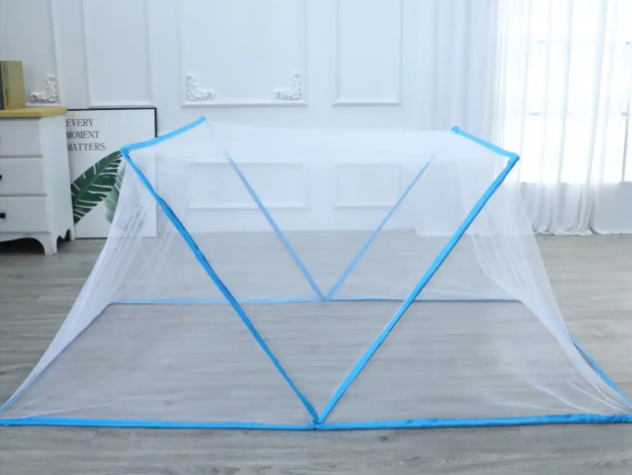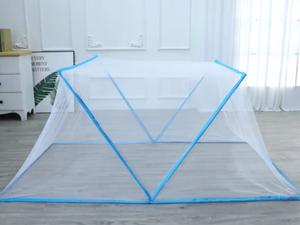
Mosquito net inspection standards and methods - Inspection, factory verification and certification services
Mosquito nets, as an essential household item for preventing mosquitoes during summer, their quality directly affects the usage effect and the health of consumers. The quality inspection of mosquito nets is a systematic project, covering the entire process from raw material entry to finished product exit. This article will deeply analyze the factory inspection and goods inspection process, key quality control points and testing standards of mosquito nets, providing comprehensive reference guidelines for purchasers, quality inspectors and manufacturers.
I. Basic Knowledge of Mosquito Nets and Preparations Before Inspection
(1) Characteristics and Classification of Mosquito Nets
Mosquito nets are protective items made of woven mesh fabric. They are breathable, environmentally friendly, and reusable. According to their appearance, they are mainly divided into square nets, round nets, and folding mosquito nets, among others. Among them, folding mosquito nets are supported by a foldable frame, making them convenient for storage and use.
(2) Preparations for Factory Inspection and Goods Inspection
Technical document review: Check product specifications, fabric test reports, and material certification for the frames.
Verification standard confirmation: Clearly define the applicable national standards (GB/T series, FZ/T series) and the customer's specific requirements
Equipment calibration for testing: Ensure that the fabric strength tester, color fastness friction tester, illuminance meter, etc. are within the calibration validity period.
Sampling plan determination: Based on the batch size, the sampling quantity and acceptance criteria are determined in accordance with GB/T 2828.1
II. Key Points for Mosquito Net Factory Audit
(1) Quality Management System Audit
Check whether the factory has established a complete quality management system (ISO9001 certification)
Review the supplier management procedures, particularly the evaluation records of key raw material suppliers such as mesh fabrics, support frame structures, and sewing threads.
Review the production process control documents and their implementation status, with a particular focus on key procedures such as fabric cutting, sewing processing, and final assembly.
Evaluate the effectiveness of the control procedures for non-conforming products and the corrective and preventive measures.
(2) Key points of on-site production inspection
Raw material storage management: Check the storage environment of mesh fabrics, as well as measures for moisture prevention and anti-pollution.
Cutting Workshop: Check fabric utilization rate, cutting accuracy, and mesh integrity
Seam-making workshop: Assessing equipment condition, needle spacing control, and thread quality
Assembly frame processing area: Inspect the material of the support frame, the quality of electroplating, and the assembly accuracy.
Finished Product Inspection Area: Verify the implementation of inspection standards and record the completeness.
III. Quality Inspection Standards for Mosquito Nets
(1) Physical Performance Testing
Mesh Density Measurement:
Measure using a fabric density meter
Complies with the product specification requirements
First-class products, first-grade products and qualified products each have their own corresponding standards.
Tear strength test:
The fabric burst strength was determined in accordance with GB/T 19976.
The strength of the seam rupture meets the standard requirements.
First-class products ≥ 250 kPa, qualified products ≥ 180 kPa
Tensile strength test:
Determined according to the method specified in Clause 3923.1 of GB/T 3923
The longitudinal and transverse tensile strength meets the standards.
(2) Color Fastness Performance Test
Resistant to Soap Wash Color Fastness:
Test in accordance with the GB/T 3921 standard
Color change and staining must all reach level 3 or above.
Resistance to color fading under perspiration:
Test in accordance with the GB/T 3922 standard
Both the acid sweat test and the alkaline sweat test must meet the standards.
Lightfastness to light:
Test in accordance with the GB/T 8427 standard
Achieve level 3 or above
Fiber resistance to rubbing color fastness:
Test in accordance with the GB/T 3920 standard
Both dry rubbing and wet rubbing must reach level 3 or above.
(3) Dimensional Stability Test
Water washing dimensional change rate:
Tested in accordance with the standards of GB/T 8628, GB/T 8629, and GB/T 8630.
The dimensional change rate after washing and drying is within ±3.0%.
IV. Appearance Quality Inspection Standards
(1) Specification and Dimension Inspection
Dimension Deviation Rate:
The length and width deviations meet the standard requirements.
First-class products: ±1.5%; Qualified products: ±2.5%
Frame dimensions:
The length and diameter of the support frame are in accordance with the specifications.
The assembly is stable.
(2) Surface Quality Inspection
Color Difference Evaluation:
According to the evaluation using the GB/T 250 gray sample cards
The color difference of the same product is no less than 4 grades.
Appearance defects:
No phenomenon of broken warp or broken weft
No damage or stains issues
The mesh is uniform and without any deformation.
(3) Inspection of Sewing Quality
Needle Trace Density:
The stitches are uniform and there are no skipped stitches.
Complies with the standard requirements
Sewing strength:
The seams are firmly attached and there are no loose threads.
Strengthening and sewing of the stressed area
V. Safety Performance Inspection
(1) Basic Safety Technical Requirements
Formaldehyde Content:
Complies with the requirements of GB18401 standard
Product category A ≤ 20mg/kg
pH value:
Complies with the requirements of GB18401 standard
Within the range of 4.0 to 8.5
Odor:
No musty smell, no gasoline smell, etc.
Decomposable carcinogenic aromatic amine dyes:
Not detectable
(2) Safety Requirements for the Frame
Material Safety:
No sharp edges or corners
The surface is smooth.
Stability test:
The structure is stable after assembly.
The load-bearing capacity meets the requirements.
VI. Inspection Rules and Quality Determination
(1) Sampling Plan
Internal quality sampling:
Random sampling by batch
At least 3 samples should be taken from each batch.
Appearance quality sampling:
In accordance with the GB/T 2828.1 standard
General Inspection Level II
(2) Defect Classification
Serious Defects:
Insufficient safety performance
Major functional defect
The mesh density is seriously insufficient.
Minor Defects:
Appearance defects
Secondary functional defect
(III) Quality Grade Evaluation
Premium Grade Products:
All indicators have met the standard requirements.
First-class product:
The main indicators have met the standard requirements.
Qualified Product:
The basic indicators have met the standard requirements.
VII. Packaging, Labeling and Storage Requirements
(1) Packaging Inspection
Inner Packaging:
The packaging materials are complete.
The product is flat and free from any indentation.
Outer packaging:
The strength of the cardboard box is sufficient.
The identification is clear and accurate.
(2) Use of Labels
Product Labels:
Compliant with the requirements of GB5296.4
The content is complete and accurate.
Installation instructions:
Clear and understandable
The illustration is clear.
(III) Storage and Transportation
Storage environment:
Dry and well-ventilated
Avoid excessive pressure
Transportation Requirements:
Waterproof and pressure-resistant
Avoid storing together with sharp objects.
VIII. Conclusion
The quality inspection of mosquito nets is a multi-dimensional systematic project involving mesh density, sewing quality, support frame strength and safety requirements. Quality inspection personnel need to have a comprehensive understanding of product standards, inspection methods and common quality issues in order to effectively control product quality. Manufacturing enterprises should establish a complete quality management system, especially strengthening control in aspects such as mesh fabric quality control, sewing process assurance and safety performance testing, to ensure that the products meet national standards and customer requirements.
Share this product

Mosquito net inspection standards and methods - Inspection, factory ve
Mosquito nets, as an essential household item for preventing mosquitoes during summer, their quality directly affects the effectiveness of their use.
